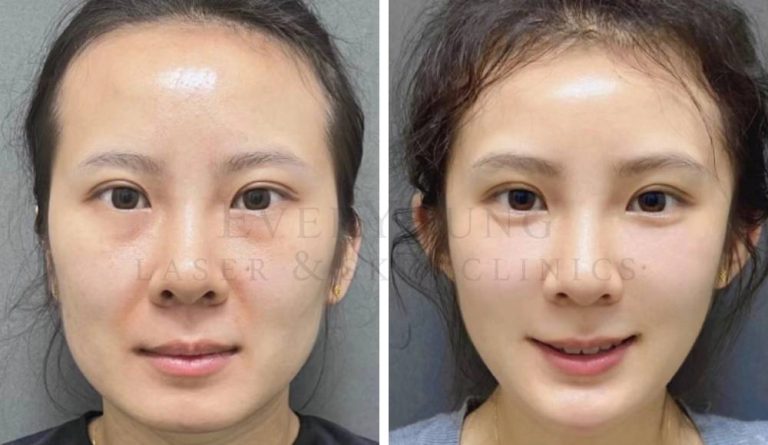Botox Vancouver, Botox Treatment Vancouver Botox, Near Me. Botox treatment for face
Botox® Cosmetic Treatments in Vancouver, BC
BOTOX® Vancouver
Say Goodbye To Wrinkles, Look & Feel Rejuvenated With Botox Treatments in Vancouver
Do wrinkles and frown lines make you look tired? Are you noticing new lines forming or existing lines growing deeper?
There are different solutions out there, and depending on your situation, botox might be the right option for you.
Botox injections reduce lines and wrinkles and restore a more natural & youthful look without invasive surgery. How does it do this? Well, Botox is a popular type of neuromodulator that acts as a muscle relaxant that gradually smoothes out the appearance of the overlying skin.
What is Botox or Botulinum Toxin?
Botulinum Toxin (such as Botox, Dysport, and Xeomin), is a “neurotoxin” derived from Clostridium botulinum, an organism found in the natural environment where it is largely inactive and non-toxic.
How Do Anti-Wrinkle Injections Make You Look Younger?
Various brands of neuromodulators are well-known for their ability to smooth wrinkles and suspend future aging, making it the most highly sought-after cosmetic treatment for a younger-looking, well-rested appearance.
Neuromodulator injections prevent nerves from moving certain muscles in your face. The “inactivation” of the muscles prevents them from pulling your skin, resulting in smoothing out existing and preventing new lines from forming.
Our clinic offers anti-wrinkle injection cosmetic treatments in Vancouver that are safe, effective, and requires no downtime.
Muscle relaxing injectables can also treat various conditions such as eye twitching, chronic migraines, excessive sweating, and urinary incontinence.
Treatable Areas With Anti-Wrinkle Injections
Muscle relaxing injectables (available as various brands) are used to treat the following conditions:
Crow’s Feet – Wrinkles in the corner of the eye that naturally occurs with age, also known as “laugh” or “smile lines”.
Forehead Lines – The horizontal lines that form when you frown or raise your eyebrows. Also known as the “horizontal” or “surprise” lines.
Frown Lines – Vertical lines between the two eyebrows that appear when someone is frowning. Also known as “brow furrow” or “number 11 lines”.
Chin Lines – The chin appears as tiny dimples or horizontal creases between the lips and the chin. Also known as “chin dimpling” or “mental creases”.
Neck Bands -Appears like vertical ropes coming from the chin down to the neck brought on by aging. Also known as “platysmal bands” or “turkey neck”.
Before & After Shots




Botox Cosmetic Treatments at a Glance

See results within 1-2 days of treatment

Single treatments last 4-6 months

No pain or need for an anesthetic.

Results
One Treatment

of Results
4-6 months

None

Low

Minor side effects occur in less than 2% of patients

In and out in 10-30 minutes

Return to home or work right away with no recovery needed.
As Health Canada restricts the information we can provide about the benefits of Botox® Cosmetic, Dysport® or Xeomin®.

Time
10-30 minutes

Work
Right away
Benefits Of Anti-Wrinkle Cosmetic Treatments







The EverYoung Med Difference
Why trust EverYoung Medical for your BOTOX treatments?
Education & Communication – We provide thorough education before your treatment so you are informed and comfortable with the procedure. We take the time to answer all of your questions.
Stress-Free Experience – A comprehensive screening process and a minimum number of years of experience required for our staff ensure only the most qualified medical professionals administer your treatments.
Safety First – Physician-led BOTOX injections regulated by The College of Surgeons and Physicians; this product is authorized for use by Health Canada.
Wide Range Of Services Offered – Get all of your cosmetic treatments done in one place, saving you time and money. Enjoy a full range of anti-aging treatments including BOTOX, Dysport, & Silhouette Thread Lift Injectables, BELKYRA Double Chin Treatment, and Non-Surgical Face Lifts. We also offer a variety of fillers, augmentations, and boosters.
Trusted Cosmetic Medical Professionals – Our team has performed hundreds of successful BOTOX and other injectables treatments, earning the trust of the Vancouver community.
15+ Years of Experience – Highly experienced doctors and certified technicians with over 15 years of combined experience provide you with a World-Class patient experience
Ready For A Rejuvenated Look?
Our goal is to help you achieve a fresh new look for your face or body using our safe and effective BOTOX cosmetic treatments.
Let BOTOX give you the rejuvenated and younger-looking skin you deserve.
Looking this great has never been easier.
Learn More About BOTOX® Cosmetic
If you have questions about BOTOX® and how it can help you achieve your goals, book your no-obligation consultation at Everyoung Medical Aesthetics Center in Vancouver.
We’ll help you to understand if BOTOX® is the right fit for you. Our physicians will take the time to understand your preferences and needs first before making any recommendations.
BOTOX Review
Amazing service and staff! The place is very clean and the staff are very helpful and professional. It was my first time getting botox here and I already booked for my next visit for fillers with Dr. Zheng. She was very knowledgeable and made me feel very comfortable during the whole appt. I would absolutely come here again and trust EverYoung Medical Aesthetics with my skin.
Ashley Wong
Botox Treatments
5 / 5
Other Treatments Besides Botox Injections
Vancouver Botox Injections FAQ
Botox will be in effect for approximately 3-4 months. In first-time users, the effects may fade a little quicker, while some long-term users have reported that the duration of the anti-wrinkle effects gradually increases over time.
Vancouver BOTOX treatments are usually completed in under 15 minutes. After the consultation session, the treatment area is decided and Botox injections are administered in only a few minutes.
The three main areas for Botox treatment are the forehead to address horizontal lines, the glabella (between the eyebrows) to minimize frown lines, and the crow’s feet around the eyes to reduce the appearance of wrinkles during facial expressions.
After Botox, it’s crucial to avoid rubbing or massaging the treated areas, refrain from intense physical activities for the first day, and follow any post-procedure instructions provided by your healthcare professional to optimize results and minimize potential side effects.
Botox results typically last around three to four months, after which the muscle activity gradually returns, and a follow-up treatment may be needed to maintain the desired effect.
Before and after Botox, it’s advisable to avoid blood-thinning medications, alcohol, and strenuous exercise to minimize the risk of bruising, and to refrain from lying down for a few hours after the procedure to prevent the spread of the toxin.
After years of Botox, some individuals may find that the muscles gradually adapt, potentially requiring adjustments in the treatment plan to maintain optimal results.
Yes, you can take a bath after Botox, but it’s advisable to avoid hot tubs or saunas for the first 24 hours post-treatment to minimize the risk of increased swelling or bruising.
You can wash your face immediately after Botox, but it’s recommended to use gentle motions and avoid rubbing the treated areas vigorously for the first day to minimize the risk of spreading the toxin.
Botox provides temporary reduction of wrinkles by relaxing muscles, but it does not permanently remove them, and maintenance treatments are typically needed to sustain the desired effect.
The number of units of Botox needed varies based on the treatment area, individual muscle strength, and desired results, with common ranges being 20 to 50 units for the forehead and 20 to 30 units for the glabella.
Yes, you can use vitamin C after Botox, as it is generally safe and may promote skin health, but be gentle while applying skincare products to avoid excessive rubbing on the treated areas.
Yes, you can get a massage after Botox, but it’s advisable to wait at least 24 hours and inform your massage therapist about the recent treatment to avoid excessive pressure on the treated areas.
The number of units of Botox for the forehead varies, but it typically ranges from 10 to 30 units, depending on factors such as muscle strength and the extent of wrinkle reduction desired.
Yes, while uncommon, potential complications of Botox include asymmetry, drooping eyelids, or unintended muscle paralysis, emphasizing the importance of seeking treatment from a skilled and qualified healthcare professional.
Botox is generally not recommended for use directly under the eyes, but it can be used in surrounding areas to address crow’s feet or other dynamic wrinkles.
The safest areas to get Botox are typically the forehead, glabella, and crow’s feet, when administered by a qualified healthcare professional following proper safety protocols.
Injecting Botox in the wrong place can lead to unintended muscle weakness, asymmetry, or, in rare cases, complications such as eyelid drooping, emphasizing the importance of precise administration by a qualified healthcare professional.
The number of units of Botox for the first time varies depending on individual factors and the treatment area, but it often ranges from 20 to 50 units for the forehead and 20 to 30 units for the glabella.
Botox is commonly injected around the eyes to target crow’s feet, which are the fine lines that form at the outer corners of the eyes when smiling or squinting.
Yes, you can moisturize your face after Botox, but be gentle and avoid massaging the treated areas excessively to minimize the risk of spreading the toxin.
Yes, you can shower two days after Botox, but it’s advisable to be gentle while washing your face and avoid hot water, as excessive heat may increase the risk of bruising.
Getting a facial three days after Botox is generally not recommended to avoid potential irritation or pressure on the treated areas, and it’s advisable to wait at least one week before scheduling facial treatments.
You can sleep after Botox, but it’s recommended to avoid lying down for at least four hours after the procedure to minimize the risk of the toxin spreading to unintended areas.
While normal facial expressions are fine, it’s advisable to minimize exaggerated movements, such as vigorous rubbing or strenuous facial exercises, for the first day or two after Botox to optimize results and reduce the risk of complications.
To achieve a natural look with Botox, start with conservative doses, focus on specific targeted areas, and collaborate closely with a skilled and experienced healthcare professional to ensure a subtle enhancement that complements your facial features.
While scientific evidence is limited, some anecdotal reports suggest that supplements containing collagen, vitamin C, and omega-3 fatty acids may support skin health, potentially contributing to longer-lasting results after Botox.
Common side effects of Botox include temporary redness or swelling at the injection site, bruising, and occasional headaches, which typically resolve within a few days.
While some individuals may notice initial improvements within a day or two, the full effects of Botox typically become apparent after about 7 to 14 days.
One unit of Botox is a standardized measurement representing the amount necessary to produce a specific biological effect and is not directly equivalent to volume or physical quantity.
Staying well-hydrated after Botox is recommended as adequate water intake may contribute to overall skin health and help minimize the risk of post-injection side effects such as bruising.
Yes, taking vitamins after Botox is generally acceptable, but it’s advisable to avoid excessive doses of blood-thinning supplements, such as high-dose vitamin E or fish oil, to minimize the risk of increased bruising.
Before Botox, it’s advisable to avoid foods and supplements that can increase the risk of bruising, such as garlic, ginger, and high-dose vitamin E, for a few days.
Persistence of “11 lines” (frown lines between the eyebrows) after Botox may be influenced by factors like individual variations in muscle activity, the need for additional units, or potential resistance to the toxin, and discussing these concerns with your healthcare provider is recommended for personalized guidance.
The long-term effects of Botox are generally considered safe, with ongoing use often resulting in cumulative benefits for wrinkle reduction, but potential risks or benefits specific to extended use should be discussed with a healthcare professional.
Botox typically takes about 2 weeks to work because it needs time to interrupt nerve signals, gradually reducing muscle activity and allowing wrinkles to smooth out over that period.
After Botox, it’s advisable to maintain a gentle skincare routine, avoiding harsh products, vigorous rubbing, or exfoliation in the treated areas to minimize the risk of irritation and promote optimal results.
While Botox primarily addresses muscle-related wrinkles, it may indirectly contribute to the appearance of healthier skin by reducing dynamic wrinkles and preventing the formation of deeper lines over time.
Botox is not known to significantly affect the immune system, as its mechanism of action involves blocking nerve signals rather than directly interacting with the immune response.
Injecting Botox directly into a nerve can lead to unintended and potentially severe side effects, including muscle weakness, numbness, or paralysis, and immediate medical attention is necessary if this occurs.
Botox is generally considered safe when administered by a qualified healthcare professional in appropriate doses, following safety protocols and considering individual health factors.
Our Metro Vancouver Botox Locations
Book an
Appointment

ALL SERVICES
- Acne treatment
- BBL- IPL Photofacial
- Body Fx
- Botox
- Coolsculpting
- Dermal Fillers
- Morpheus8
- Sylfirm X
- Sofwave
- Fotona StarWalker®
- Fractora
- Hair Loss / Balding
- Hydrafacial MD
- Laser Hair removal
- Alma Harmony® XL Pro
- Alma Harmony® XL Pro ClearLift™
- Alma Harmony® XL Pro Dye VL Laser
- Lip augmentation
- Laser Genesis
- Microdermabration
- Microneedling
- Non-surgical Facelift
- Pigmentation Treatment
- PDRN Salmon DNA
- Picosure
- Prp Blood Facial
- Red and vessels treatment
- RF Collagen Induction
- Ultherapy
- Thermage
- Thermage® CPT™
- Thermage® FLX
- Vaginal Rejuvenation
Where to Find Us?
Downtown Vancouver

MondayClosed
Tuesday10:00am–6pm
Wednesday10:00am–6pm
Thursday10:00pm–6pm
Friday10:00am–6pm
Saturday10:00am–6pm
SundayClosed
 604-706-1503 (English)
604-706-1503 (English) 604-305-2098 (Chinese)
604-305-2098 (Chinese)Metrotown, Burnaby

Monday10:00am–6pm
Tuesday10:00am–6pm
Wednesday10:00am–6pm
Thursday10:00pm–8pm
Friday10:00am–6pm
Saturday10:00am–6pm
Sunday10:00am–6pm
 604-305-2098 (English)
604-305-2098 (English) 604-305-2098 (Chinese)
604-305-2098 (Chinese)Free Parking Available
GET DIRECTIONSPort Coquitlam

Monday10:00am-6pm
Tuesday10:00am-6pm
Wednesday10:00am-6pm
Thursday10:00am-6pm
Friday10:00am-6pm
Saturday10:00am-6pm
SundayClosed
 604-210-6319 (English)
604-210-6319 (English) 604-305-2098 (Chinese)
604-305-2098 (Chinese)Free Parking Available
GET DIRECTIONSNorth Vancouver

MondayClosed
Tuesday10:00am–6pm
Wednesday10:00am–6pm
Thursday10:00pm–6pm
Friday10:00am–6pm
Saturday10:00am–6pm
SundayClosed
 604-265-7044 (English)
604-265-7044 (English) 604-305-2098 (Chinese)
604-305-2098 (Chinese)Free Parking Available
GET DIRECTIONSWith locations in Downtown Vancouver, North Vancouver, Burnaby & Port Coquitlam, we proudly serve people throughout greater Vancouver and the lower mainland with all of their acne, skin and beauty needs.
Contact us now to book an appointment.




